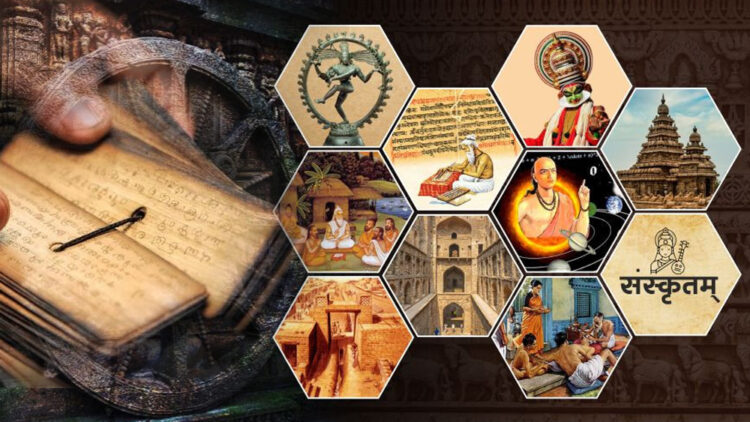Throughout history, human civilizations have expressed their understanding of the world through rituals, festivals, and beliefs. While these traditions may appear purely symbolic or spiritual, many contain profound scientific wisdom embedded within them. From astronomy and agriculture to health, physics, and psychology, cultural celebrations often preserve practical knowledge in forms that are both meaningful and memorable. Exploring the science behind these traditions reveals how ancient societies observed natural laws long before the formalization of modern science.
Festivals as Reflections of Seasonal Science
Cultural festivals across the world often align with specific astronomical or agricultural events. These dates were chosen not randomly but through careful observation of the Earth’s rotation, the movement of the sun, and seasonal changes. For example, the Indian festival of Makar Sankranti marks the sun’s entry into the zodiac sign Capricorn, symbolizing longer days and the end of winter. Similarly, the ancient Egyptians celebrated the flooding of the Nile—crucial for their agriculture—by observing the rising of the star Sirius. Such festivals show how early humans developed a sophisticated understanding of astronomy, using it to predict seasons and ensure agricultural success.
The Physics of Fire and Light Rituals
Light and fire play vital roles in many global festivals, symbolizing purity, renewal, and victory over darkness. Scientifically, these rituals often align with the need for light and warmth during colder or darker months. In Hindu Diwali, candles and oil lamps illuminate homes not only for spiritual symbolism but also to reduce humidity and repel insects after the monsoon season. Similarly, Europe’s Winter Solstice celebrations and Japan’s Obon lantern festivals use fire and light to mark astronomical transitions, bringing communities together while acknowledging natural cycles of energy and darkness.
The Chemistry in Traditional Offerings and Materials
Many cultural practices use substances that have hidden chemical benefits. In South Asian rituals, turmeric, sandalwood, and camphor are common elements with antiseptic and antimicrobial properties. Turmeric paste applied during pre-wedding ceremonies, for instance, serves as a natural disinfectant for the skin. Burning camphor during rituals purifies the air by releasing compounds that repel insects and neutralize bacteria. Similarly, in ancient Chinese ceremonies, incense was believed to connect with the spiritual world, but its smoke also served as an air purifier in crowded temples. These practices demonstrate how chemical understanding was integrated into spiritual symbolism long before modern chemistry was born.
Agricultural Science and Harvest Celebrations
Harvest festivals across cultures — such as Thanksgiving in North America, Pongal in India, and the Mid-Autumn Festival in China — are grounded in ecological awareness and agricultural cycles. Farmers learned to observe rainfall patterns, soil fertility, and lunar cycles to plan their planting and harvesting. The celebrations marked not just gratitude for abundance but also the synchronization of human life with the Earth’s natural productivity. Traditional food preservation methods, such as fermenting grains or drying fruits during harvest season, reflect early biochemical knowledge of microorganisms and preservation science that sustained communities throughout the year.
The Psychology of Rituals and Community Health
Rituals serve a scientific psychological purpose — they reduce anxiety, strengthen social bonds, and create emotional stability. Participating in communal activities such as dances, songs, and shared meals triggers the release of endorphins, promoting feelings of belonging and happiness. Festivals also provide structured times for relaxation and celebration, which contribute to mental well-being. For instance, Japan’s Hanami (cherry blossom festival) encourages people to pause and appreciate nature’s transient beauty, reinforcing mindfulness and emotional balance. Modern psychology recognizes that such traditions play a crucial role in reducing stress and enhancing collective resilience.
The Environmental Wisdom in Cultural Traditions
Many ancient celebrations were designed to maintain ecological harmony. In Native American traditions, ceremonies honoring the elements remind people to respect the balance of nature. Likewise, during Earth-centered festivals like Holi in India, older practices used natural plant-based colors that returned to the soil without harm. In Celtic traditions, Beltane fire rituals encouraged controlled burns that renewed pastures and prevented wildfires. Such customs reflect early forms of environmental science, teaching sustainable living long before the concept of “ecology” existed.
Table: Scientific Foundations Hidden in Cultural Traditions
| Tradition/Festival | Cultural Origin | Scientific Principle Reflected |
|---|---|---|
| Makar Sankranti | India | Solar movement and seasonal transition |
| Winter Solstice | Europe | Astronomy and Earth’s axial tilt |
| Diwali | India | Physics of light and natural pest control |
| Hanami | Japan | Psychology of mindfulness and stress relief |
| Harvest Festivals | Global | Agricultural science and food preservation |
Astronomy and Timekeeping in Ancient Celebrations
Ancient festivals also acted as natural calendars. The Mayan and Aztec civilizations built temples aligned precisely with celestial bodies, allowing priests to determine solstices, equinoxes, and eclipses. In Stonehenge, the alignment of stones with the sunrise on the summer solstice demonstrates early geometric and astronomical understanding. The Islamic calendar’s reliance on lunar cycles, and the Jewish celebration of Passover based on moon phases, show how cultures used astronomy for timekeeping and ritual synchronization. These systems highlight humanity’s early scientific curiosity and precision in measuring time through observation of the heavens.
The Biology Behind Fasting and Cleansing Rituals
Fasting is a common element in many religious and cultural traditions, including Ramadan in Islam, Lent in Christianity, and Ekadashi in Hinduism. Modern biology now recognizes fasting’s benefits for metabolism, cellular repair, and longevity. Periods of restricted eating give the digestive system rest, trigger autophagy (the body’s natural detox process), and improve insulin sensitivity. What was once practiced for spiritual discipline is now supported by science as a health-promoting behavior. These rituals demonstrate how ancient wisdom often encoded biological principles that align with modern medicine.
Modern Interpretations: Bridging Tradition and Science
In today’s globalized world, scientists and anthropologists increasingly study cultural traditions to uncover their empirical foundations. Many once-dismissed beliefs are now re-evaluated for their ecological, psychological, or medical value. Aromatherapy, yoga, sound healing, and herbal remedies — once considered purely spiritual — are now supported by research showing tangible effects on human health. Understanding the science hidden in cultural practices allows modern society to preserve ancient wisdom while integrating it with evidence-based methods for a holistic approach to life.
FAQs
1. How do cultural festivals reflect scientific understanding?
Cultural festivals often align with astronomical, agricultural, or ecological cycles, demonstrating how ancient people observed and adapted to natural laws long before modern science developed formal systems.
2. Why do ancient rituals often include fire, fasting, or offerings?
These elements had practical benefits — fire for purification, fasting for health regulation, and natural offerings for hygiene or environmental renewal — revealing a scientific logic behind spiritual symbolism.
3. Can modern science learn from ancient beliefs?
Yes. By studying traditional practices through scientific lenses, researchers can uncover valuable insights into sustainability, wellness, and human psychology that continue to benefit modern life.



